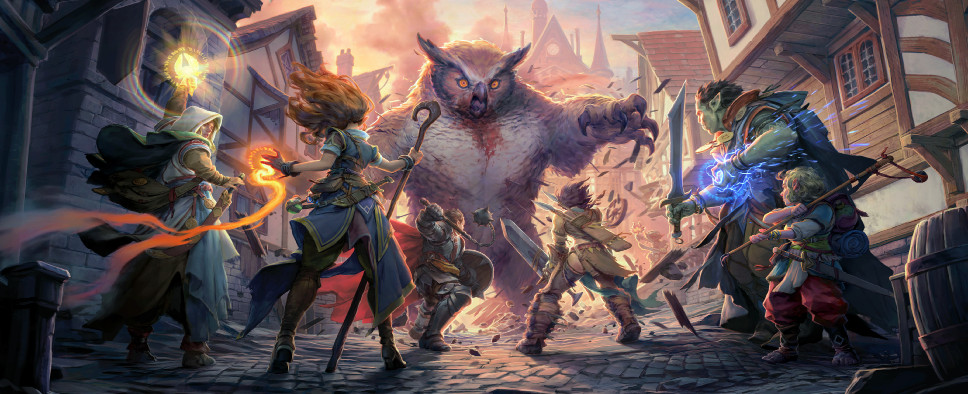Pathfinder: Kingmaker Update #22, $629,194 and Counting
-
Category: News ArchiveHits: 1437

The latest Pathfinder: Kingmaker Kickstarter update talks about the art of UI design. I have to admit, I consider the often-maligned Arcanum interface to be perfectly fine, and the point of this update is lost on me. However, if you care about UI design and are particular about font choices, you'll probably find this update to be quite interesting. It even includes heat maps and eye tracking reports from the external tests Owlcats have conducted in order to figure out the best ways to optimize their UI.
Here's an excerpt:
Interfaces are a huge part of any CRPG game. There are a lot of entities like characters, skills, abilities and spells, all of which are striving to attract the player's attention. An important factor here is that everything needs to be represented with a high level of detail and our task is to make all these sheets, formulas and endless columns of text easier to read and understand. We constantly balance between informativeness, aesthetics, and user-friendliness. Therefore, while designing every single UI element we are focused on two main principles: convenience and immersion. It should be stressed that from the very beginning, we decided to give preference to immersion.
With our focus on immersion in mind, we always start designing a new UI element by searching for real historical items, which fit the setting of Pathfinder: Kingmaker for visual reference. These can be old books, scrolls, chests, cabinets, writing utensils and chairs, maps and travel notebooks. Their visual appearance, materials and decor elements are a good starting point to inspire a UI designer's creativity.
To maintain convenience of our UI elements we actively use multistage pipeline and UX-research.
So, let's get into the details. Every interface - from full screen dialogues to small tooltips - goes through several stages and iterations.
First of all, we conduct a thorough analysis of the future content and use cases and create the first draft sketch(es) that we share with the team. When all feedback is addressed we develop the first static wireframes. These are the ingame concepts of a developed interface, which helps to understand how it will look, to evaluate both the information content & context and layout of the UI elements. Usually, this stage is followed by a heated discussion. For example, our senior game designer wants to see more numbers EVERYWHERE. The more numbers the better, he always says. At the same time, our technical artist (the guy with the axe on the team's gif) fiercely insists that the interface has to be as atmospheric as possible... and he's usually very convincing, because, you know, axe. In general, we fight to find a satisfying balance maneuvering between opinions, like Odysseus between Scylla and Charybdis. After that emotional stage, we implement the functionality with draft art assets, followed by a series of playtests. Once we are satisfied with the results, it's time for our UI artist to create the final look. And that is actually just the end of the first iteration. When real players make a trial of the interface while playing the game, we receive the next portion of feedback and start polishing. It may take 3-5 iterations to make the interface really comfortable for the gamers.
It is difficult to evaluate the result of our work inside the team. After all, we are all biased with our work to some extent. To mitigate this issue we conduct UX-studies, involving both active members of the Pathfinder Society community and CRPG fans. These studies help us understand players' behavior, goals, requirements and motivation. We get a better understanding of how they navigate the game interface, where they have problems and, most importantly, what they feel interacting with the game.
We conducted the first UX-study in early March of this year. We invited mostly our colleagues and friends to get their expert feedback and to boast a little bit. ;) Although the version was quite raw and incomplete at that time, we were able to get a lot of precious comments.
The last UX-research we made in May resulted in a report of 66 pages. More than 100 unique tasks were assigned to address issues found.
Some of these issues were quite obvious. But the most interesting ones made it clear that our solutions do not always work the way we expect. For example, when analyzing feedback for the Rest interface, we detected the following problems (see "Heat map of the Rest interface"). Respondents did not understand:We will conduct the following research within this month where we want to focus on the players' sense and emotions rather than just the interface's functionality.
- that they can hover over the status icon and get a hint
- how to rest up to full health
- what amount of rations is required to completely restore the health of the characters
- how much real time will be spent on recovery

